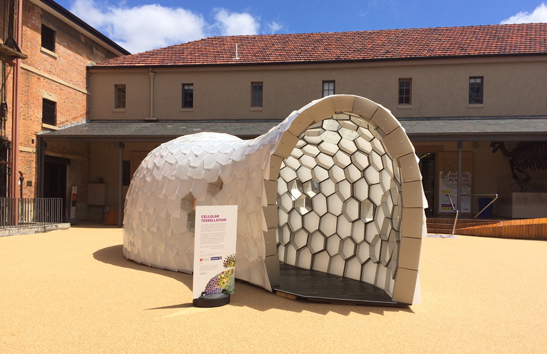Cellular Tessellation
 Greeting visitors to the Tasmanian Museum and Art Gallery (TMAG) this summer during the exhibition Pattern Play is the intriguing installation Cellular Tessellation.
Greeting visitors to the Tasmanian Museum and Art Gallery (TMAG) this summer during the exhibition Pattern Play is the intriguing installation Cellular Tessellation.
The structure is made of 380 hexagonal cells, all of which are different, just like in nature. These differences enable the curving body and rigid structure of the pavilion.
It has been inspired by certain kinds of patterns seen in nature like the patterns on giraffe skin and turtle shells. However, Cellular Tessellation was designed and made using new digital technologies, such as software coding, laser cutters and computer-controlled routers.
The plastic in the cells of Cellular Tessellation is high-density polyethylene (HDPE) – the same plastic used in two or three litre milk bottles.
HDPE has a high strength-to-density ratio, making it strong yet light. For this reason it is used in a range of building and packaging products. It is also recyclable, as indicated by the number "2" resin identification code.
Cellular Tessellation is a research project of Bond University, Queensland, originally created for the 2014 Sydney Vivid Light festival. The project was designed by Chris Knapp, Jonathan Nelson and Michael Parsons.
The installation of Cellular Tessellation at TMAG is sponsored by Valhalla and Betta Milk.
TMAG also acknowledges the support of Detached Cultural Organisation, the University of Tasmania and the Institute of Architects Hobart chapter in bringing the installation to Hobart.

